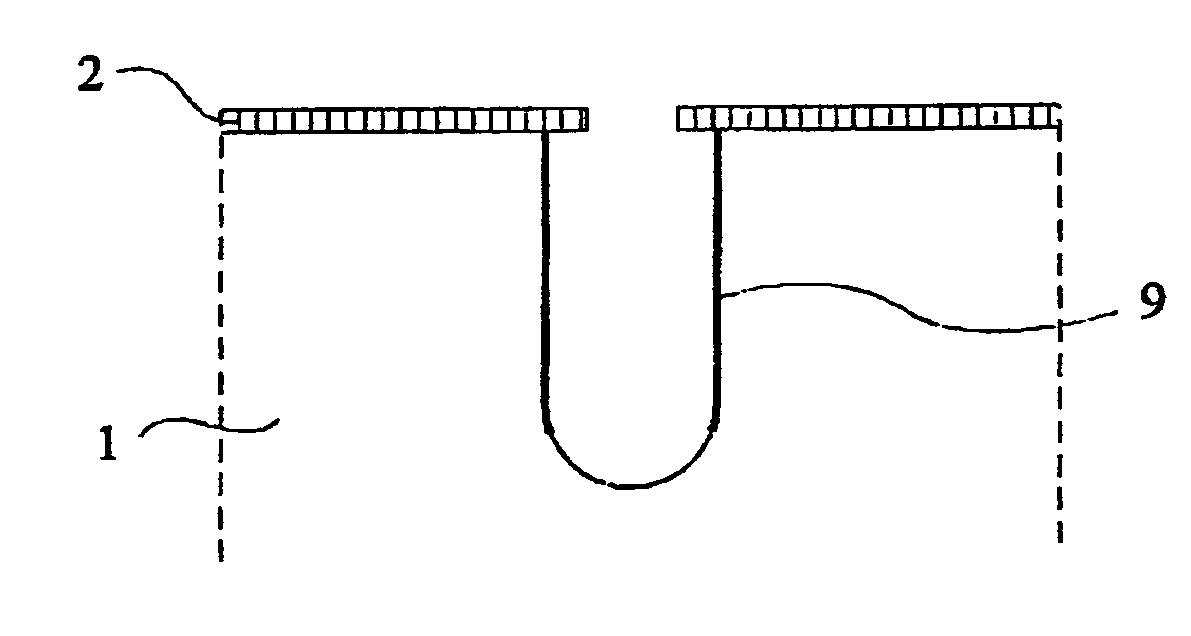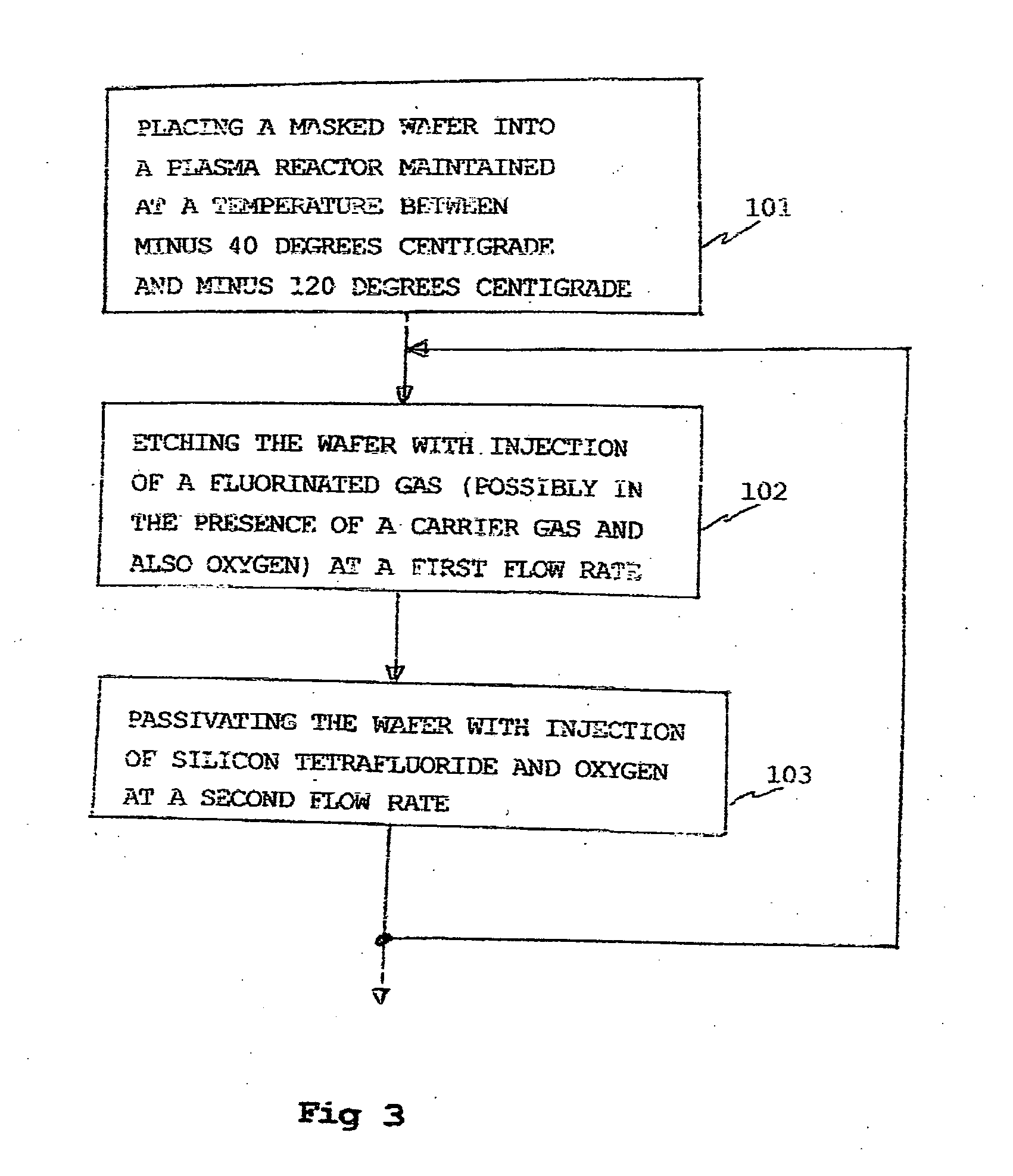Deep anisotropic silicon etch method
a silicon wafer and anisotropic technology, applied in the field of deep anisotropic etching of silicon wafers, can solve the problems of forming a polymer on the recess walls, the trench or the rib is grooved, and the walls of the obtained well are eroded,
- Summary
- Abstract
- Description
- Claims
- Application Information
AI Technical Summary
Benefits of technology
Problems solved by technology
Method used
Image
Examples
example
[0050]It may for example be worked in the following conditions:
[0051]etching: SF6 flow rate: 200 standard cm3 per minute (sccm) with a possible addition of 13 sccm Of O2,
[0052]passivation: SiF4 flow rate: 20 sccm and O2 flow rate 13 sccm,
[0053]in both cases, plasma conditions:
[0054]pressure: 3 Pa,
[0055]RF source power: 1000 W,
[0056]biasing: −60 V.
[0057]Under such conditions, an etch rate of 6 μm per minute is obtained in a trench having a 10-μm opening.
[0058]More generally, during the etching, the proportion between oxygen and sulfur hexafluoride may be on the order of from 5 to 10%. During the passivation steps, the proportion between oxygen and silicon tetrafluoride may be on the order of from 50 to 80%.
[0059]The SF6 flow rate for example ranges between 100 and 1000 sccm, preferably between 200 and 400 sccm. The SiF4 flow rate for example ranges between 5 and 50 sccm, preferably close to 20 sccm. The 02 flow rate for example ranges between 5 and 100 sccm, preferably between 10 and...
PUM
| Property | Measurement | Unit |
|---|---|---|
| Temperature | aaaaa | aaaaa |
| Temperature | aaaaa | aaaaa |
| Temperature | aaaaa | aaaaa |
Abstract
Description
Claims
Application Information
 Login to View More
Login to View More - R&D
- Intellectual Property
- Life Sciences
- Materials
- Tech Scout
- Unparalleled Data Quality
- Higher Quality Content
- 60% Fewer Hallucinations
Browse by: Latest US Patents, China's latest patents, Technical Efficacy Thesaurus, Application Domain, Technology Topic, Popular Technical Reports.
© 2025 PatSnap. All rights reserved.Legal|Privacy policy|Modern Slavery Act Transparency Statement|Sitemap|About US| Contact US: help@patsnap.com



